#modern filmmaking modern storytelling
Text
My least favourite type of internet person is the person who claims fanfic is over thousands of years old or whatever. I understand we like to joke but fanfiction is fundamentally tied to fandom culture and is a very specific way of engaging with media. Religious texts based off other religious texts is not fanfiction and it is worrying the only way you can justify your interest is by comparing the two. I promise you you don't have to reinvent the wheel to write fanfic you can just do that but we don't have to say "Shakespeare wrote fanfiction about Richard III", there was not a Richard III fandom in 1592, that was called the divine right of kings.
#brieuc.txt#I just dislike those kinds of comments#it feels like trying to justify and validate something that doesn't need it#the desire to prop fanfic up as just as much a serious text is strange? fanfic is more interesting in it's relationship to modern media#modern filmmaking modern storytelling#rather than bending over backwards to call dante's inferno fanfiction
5K notes
·
View notes
Text
in 40+ years, there have been 6 rocky movies and 2 creed movies, with a third creed on the way. james bond has done 25 films in 60 years. it took james cameron longer than mcr's breakup to release a sequel to the highest grossing film of all time. i want to have to wait for the next one. i want sequel(s) to be just as artistically meaningful as the first one. i want the people behind and in front of the camera to care about their work and be able to put in the time to make something magical (and still be able to see their families). i want films to be made by PEOPLE and not drones that have been worked to death. i want stories not products.
#and YES i understand the hypocrisy of me loving cannon films and hating the current machine#but i think golan and globus legitimately loved movies!!! the mouse doesnt give a shit#yes cannon was a factory but it was hectic and put every dollar on screen. it was often dumb and sometimes BRILLIANT#modern corporate filmmakers want to make money for their yachts#thats not storytelling#ruth talks
4 notes
·
View notes
Text
I Hate How She Talks About Snow White

"People are making these jokes about ours being the PC Snow White, where it's like, yeah, it is − because it needed that. It's an 85-year-old cartoon, and our version is a refreshing story about a young woman who has a function beyond 'Someday My Prince Will Come. "
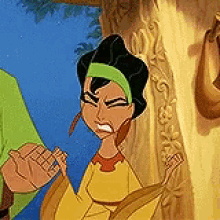
Let me tell you a little something's about that "85-year-old cartoon," miss Zegler.
It was the first-ever cel-animated feature-length full-color film. Ever. Ever. EVER. I'm worried that you're not hearing me. This movie was Disney inventing the modern animated film. Spirited Away, Into the Spider-Verse, Tangled, you don't get to have any of these without Snow White and the Seven Dwarfs (1937.)
Speaking of what you wouldn't get without this movie, it includes anime as a genre. Not just in technique (because again, nobody animated more than shorts before this movie) but in style and story. Anime, as it is now, wouldn't exist without Osamu Tezuka, "The God of Manga," who wouldn't have pioneered anime storytelling in the 1940s without having watched and learned from Snow White and the Seven Dwarfs in the 1930s. No "weeb" culture, no Princess Mononoke, no DragonBall Z, no My Hero Academia, no Demonslayer, and no Naruto without this "85-year-old cartoon."
It was praised, not just for its technical marvels, not just for its synchronized craft of sound and action, but primarily and enduringly because people felt like the characters were real. They felt more like they were watching something true to life than they did watching silent, live-action films with real actors and actresses. They couldn't believe that an animated character could make kids wet their pants as she flees, frightened, through the forest, or grown adults cry with grieving Dwarves. Consistently.
Walt Disney Studios was built on this movie. No no; you're not understanding me. Literally, the studio in Burbank, out of which has come legends of this craft of animated filmmaking, was literally built on the incredible, odds-defying, record-breaking profits of just Snow White and the Seven Dwarfs, specifically.
Speaking of record-breaking profits, this movie is the highest-grossing animated film in history. Still. TO THIS DAY. And it was made during the Great Depression.
In fact, it made four times as much money than any other film, in any other genre, released during that time period. It was actually THE highest-grossing film of all time, in any genre, until nothing less than Gone With the Wind, herself, came along to take the throne.
It was the first-ever animated movie to be selected for the National Film Registry. Actually, it was one of the first movies, period, to ever go into the registry at all. You know what else is in the NFR? The original West Side Story, the remake of which is responsible for Rachel Ziegler's widespread fame.
Walt Disney sacrificed for this movie to be invented. Literally, he took out a mortgage on his house and screened the movie to banks for loans to finish paying for it, because everyone from the media to his own wife and brother told him he was crazy to make this movie. And you want to tell me it's just an 85-year-old cartoon that needs the most meaningless of updates, with your tender 8 years in the business?
Speaking of sacrifice, this movie employed over 750 people, and they worked immeasurable hours of overtime, and invented--literally invented--so many new techniques that are still used in filmmaking today, that Walt Disney, in a move that NO OTHER STUDIO IN HOLLYWOOD was doing in the 30's, put this in the opening credits: "My sincere appreciation to the members of my staff whose loyalty and creative endeavor made possible this production." Not the end credits, like movies love to do today as a virtue-signal. The opening credits.
It's legacy endures. Your little "85-year-old cartoon" sold more than 1 million DVD copies upon re-release. Just on its first day. The Beatles quoted Snow White in one of their songs. Legacy directors call it "the greatest film ever made." Everything from Rolling Stones to the American Film Institute call this move one of the most influential masterpieces of our culture.
This movie doesn't need anything from anybody. This movie is a cultural juggernaut for America. It's a staple in the art of filmmaking--and art, in general. It is the foundation of the Walt Disney Company, of modern children's media in the West, and of modern adaptations of classical fairy tales in the West.
When you think only in the base, low, mean terms of "race" and "progressivism" you start taking things that are actually worlds-away from being in your league to judge, and you relegate them to silly ignorant phrases like "85-year-old cartoon" to explain why what you're doing is somehow better.
Sit down and be humble. Who the heck are you?
#Snow White#Snow White and the seven dwarfs#snow#snow white 1937#snow white and the seven dwarfs 1937#Snow White 2024#Rachel zegler#west side story#poc#Disney#live action Disney hate#animation history#Do not go see this movie. Do not stream this movie.#Anime#anime history
5K notes
·
View notes
Text
I know I’ve spoken about my issues with ‘Peter Pan and Wendy’ (2023) before, both in my initial thoughts post about the film after it released and a couple of smaller comments since, but I’ve realised something this past week after rewatching the original Disney cartoon and the 2003 non-Disney live-action while sick, and I feel I need to talk about it.
It’s about Wendy Moira Angela Darling.
While I stand by that Ever Anderson was one of the highlights of the film and that she did a great job as Wendy, the Wendy in the film is not really the Wendy seen in Barrie’s book, nor the one in the play and other films adaptations. It’s a very different character in a lot of ways, and while it’s normal for characters to differ from adaption to adaptation - especially over the course of 70+ years - I feel like the Wendy seen in the 2023 is more like Jane, Wendy’s daughter, from Disney’s Return to Neverland sequel in 2002.

Let me preface by saying that I actually love Jane in the sequel as a character - I see a lot of myself in her, and while the sequel in itself is not really my favourite, I do have some nostalgia for it because I grew up with it and it’s a cute little story. I like that Jane is actually different from Wendy in a lot of ways; she’s a lot more headstrong and more of a tomboy, and while she’s also a storyteller at times like her mother (mostly to her brother Danny), she is a lot more practical I think and seems to be opposite to Wendy in that she’s trying to grow up too fast. Wendy believes in Peter Pan and doesn’t want to grow up, meanwhile Jane believes Peter Pan to be silly childish nonsense, that she has to grow up quickly and be more adult due to the war/her father being away - Wendy says to her, “you think you’re very grown up - but you have a great deal to learn”.
Obviously the 2023 Wendy doesn’t want to grow up, that’s still the same, but in terms of personality, temperament and the way she treats her brothers after the broken mirror incident (blaming John for it), she reminds me more of Jane than Wendy. Like Jane, she also doesn’t seem to have a good time going to Neverland (at least not at first?) and she seems to take on a lot more action than Wendy did in the animated film.
Of course, it’s not the first time that we’ve seen Wendy wielding a sword and fighting pirates - the 2003 Wendy was shown to play with wooden swords and use real ones, even remarking, “who are you to call me ‘girlie’?!”. I’m not saying that Wendy can’t be a sword wielding girl and fight because she can, it’s one of the additions I love the most about the 2003 film.
The problem with the 2023 version of Wendy is not her being a main character (she has always been a main character), nor her sword fighting and being generally bad-ass - it’s the erasure of the other qualities that make her Wendy Darling.
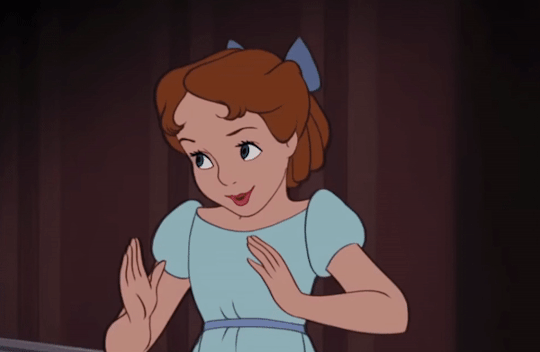
One of Wendy’s primary character traits is her mothering nature - she is very motherly to her brothers, and when she hears that the Lost Boys don’t have a mother, she’s aghast and agrees to be their mother. The whole “Peter is father, Wendy is mother” idea is clearly a reference to how kids in the playground will play games like “mummies and daddies” - kids imitating what they see around them. It’s all a big pretend game in Neverland for fun. It’s also undeniable that Wendy pretending to be the Lost Boys’ mother is clearly reflective of her own mother, who she adores and is portrayed as the loveliest lady ever, and how she’s imitating Mrs Darling in a lot of ways during this “game” - singing to them, telling them stories, medicine etc.
Some would argue that Wendy is “forced” into being the “mother” and that while all the boys are off having fun, she’s left playing house, which I understand. But what a lot of modern audiences and filmmakers don’t understand these days is that motherhood is NOT an anti-feminist idea - there seems to be this view that portraying a girl wanting to be a mother or expressing the wish to be married/have children is some old-fashioned misogynistic notion, which is absolutely bizarre to me.
As a feminist myself, I believe that there is no clear cut definition of “womanhood” or what it means to be a strong woman with autonomy. Some women want to have careers and not have children, and that’s fine; some women want to have children, that’s fine; some women want both, and that’s fine. What matters is that it’s the woman who is deciding what she wants.
For me, Wendy has always been this remarkable and extraordinary character to look up to because she chooses to grow up - and for her, that means having her own children to tell her stories to. That’s what she wanted, that’s why she went back to England, and that’s part of her character arc, realising that by growing up she has things to look forward to.
For some reason, when 2023!Wendy thinks “happy thoughts” to make herself fly when being walked off the plank, her vision for the future that she looks forward to involves piloting automobiles that haven’t even been invented yet and then dying alone? Which… I mean, if that’s how someone wants to live then fair enough but that’s not Wendy. That’s not the Wendy Darling I grew up loving.
A lot of my issues with the 2023 version of Wendy do in fact link with other issues of the film in general: the Lost Boys including girls, for example. Like I get wanting to be inclusive, and I 100% wanted to be a Lost Girl growing up, but the Lost Boys are boys for a reason (“girls are much too clever to fall out of their prams”), and when Wendy arrives it’s a huge deal because they’ve never actually lived with girls before, and the only concept of girls they have is their memories of “mother”, which is why Wendy becomes their mother figure - because they literally don’t have any other female figures in their lives to compare her to other than the tiny scraps they remember of their mothers.
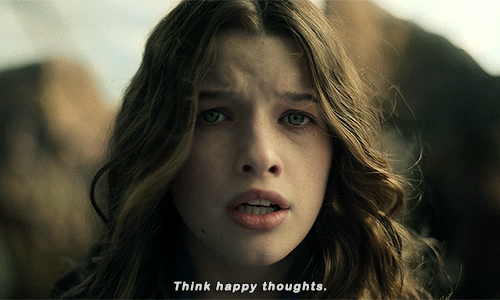
There’s also the issue of the thing prompting Wendy not wanting to grow up being changed; in the original, it’s because it’s her last night in the nursery and moving from the nursery - aka the room she has spent her entire life thus far in - to her own room is a HUGE transitional worry that a lot of kids probably go through (usually it’s in the form of moving from toddler beds to big kid beds but still). In the 2023 version, she’s being sent off to boarding school for some reason which doesn’t really make sense to me because the Darling parents a) are so poor they have to have a dog as a nursemaid and b) love their children so much that they would never do that to them. I’m not saying that being shipped off to boarding school ISN’T a worry for a young girl or a huge deal, but it isn’t one that I think necessarily fits with the story.
There’s the fact that Wendy is no longer the storyteller; in most versions, the reason Peter visits the nursery is because he likes her stories. Instead, the reason he comes to the nursery is not because he likes her stories but because he used to live in the house? And instead of bringing her to Neverland to tell stories, he comes to take Wendy away as he apparently heard her saying she didn’t want to grow up? It just doesn’t sit right with me, but maybe that’s just my opinion.
Also, for some reason, Wendy and Peter don’t actually seem to like each other at all in the 2023 version - I’m not saying there should have been romantic hints or whatever, but even just in a friendship way they really don’t seem to care in any way about each other. They just seemed rather indifferent towards each other, and it’s kind of jarring to see.
In some ways, I feel like 2023 Wendy was made a little too bad ass and on the nose super feminist: “this magic belongs to no boy!”, slapping Peter across the face (which was just…??? Why?!?!), constantly criticising Peter/Neverland, having WAY more action and heroic moments than Peter Pan himself… maybe in a different story it could have worked but for this one, it came across forced at times, like they were intentionally trying to show “look! Look how badass she is! She can fight off grown men all by herself! She doesn’t need a boy to help her! She can do everything by herself!”
This is why I feel like the 2003 version of Wendy is the best one (so far): while they modernised her slightly by making her sword fight and express an ambition to write novels about her adventures, she was still a storyteller and motherly figure to the Lost Boys/her brothers. For me as a child, seeing Wendy be the storyteller and her journey of acceptance about having the grow up was really important to me because I could completely relate to it.
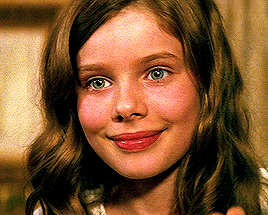
Of course, I recognize I’m very biased because this is the one I grew up with (along with the animated Wendy of course) so I’d be interested to hear other people’s thoughts!
#peter pan#peter pan and wendy#wendy darling#neverland#jm barrie#j.m. barrie#disney#peter pan 2003#peter pan 2023
64 notes
·
View notes
Photo
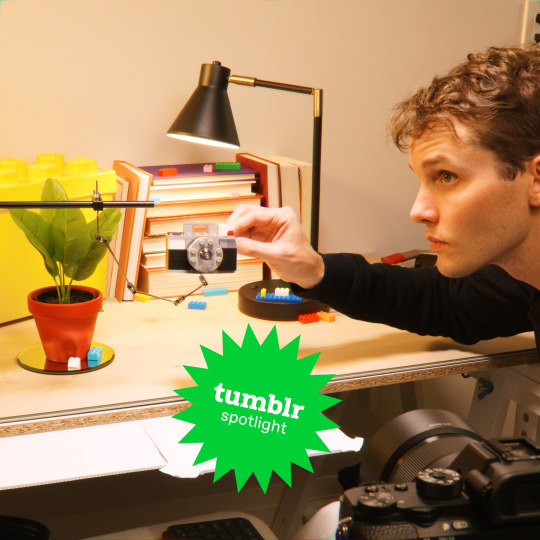
Creator Spotlight: @kevinbparry
Kevin Parry is a stop-motion animator and visual effects artist in Toronto, Canada, who creates magical and mind-bending content for brands. Prior to working in social media full-time, he animated a number of stop-motion feature films at Portland-based LAIKA.
Check out our interview with Kevin below!
How did you get your start in stop motion and animation in general?
I was always very interested in moviemaking (monster makeup and visual effects), and that led to me studying animation in college, where I specialized in stop-motion.
How has technology changed the way you approach your work?
The shift to shorter content through social media feeds has made me approach storytelling in a more concise way. When I first started my career, ‘short form’ meant a story maybe 4 minutes in length. Now, I make videos that are as short as 4 seconds!
Over the years as an animator, who/what were your biggest inspirations behind your creativity?
I’m a big fan of directors and artists who have a bit more texture to their work - blending old-school, handcrafted techniques with modern technology. Filmmakers like Michel Gondry and Wes Anderson. And, of course, magicians! The surprise and delight of magic is something I try to capture in my work.
If there is one thing you want your audience to remember about your work, what would it be?
That I left them feeling stumped and curious about how I made it! It’s the best feeling when someone tells me they watched my video a dozen times and still can’t figure it out.
As we’re wrapping up with the year, what is one thing you learnt about yourself as a creator in 2022? Any goals for 2023?
This year, I’ve been focusing on making my work less polished. Meaning ditching green screens and doing a lot more of my stop-motion and visual effects in camera. It’s a bit of a battle with the perfectionist in me, but I think my work can have a lot more charm to it if I embrace mistakes and the rougher edges.
How did you transition from working for a company to working freelance?
I was working on stop-motion animated feature films at LAIKA and then eventually left to pursue social media full-time. There were a few years of overlap where I built up an audience and had already started to get offers from companies before finally making the leap. I’m thankful for all the years spent doing studio work because it prepared me for the business side of freelance—stuff like pitching concepts and understanding when work needs to serve the client and not myself.
Do you have any tips for creators out there looking to make the same move?
My two tips are:
Be as unique as possible. You want to give companies a reason to come to you, and not someone else.
Find a balance in your work between Hollywood and homemade. You want it to be professional enough that companies trust you with their brand but approachable enough that it blends in well on social media.
Who on Tumblr inspires you and why?
To be honest, I’m new to Tumblr! I signed up a few weeks ago and have just begun to explore the fantastic content. If people can leave a comment with who I should check out, that would be fantastic!
Thank you for stopping by, Kevin! Be sure to check out more of their work over at @kevinbparry, and drop a comment below with who Kevin should check out on Tumblr!
522 notes
·
View notes
Text
come to think of it, peter jackson’s work is one of the best things that could have happened in modern beatles history. not only is he such a talented filmmaker and storyteller, he is a true beatles fan and handles his tasks with a passion that bleeds through the screen. and beatles work needs to be done like that: skillfully and, most importantly, with burning love. for the band, for the members, for their work, for what it all represents. otherwise it doesn’t work. i think he gets it. and i truly think now and then wouldn’t be the same without get back, both because of the technology and because of the way get back put it in perspective and helped reshape the popular narrative. plus, this lil doc is perfect and i can only imagine the music video will also be. i’m really appreciative of his work taking care of the legacy of this band i love so much
137 notes
·
View notes
Text
Funny heading to a blogpost on videogames that’s some sort of reference
Look, I already used the ctrl+alt+delete quote in a blogpost title.
It’s February 2024, and it’s already a very wild year for gaming. We’ve had more layoffs than with the entirety of 2023, games shown off at events seem to be stagnating, interest in the art is waning. Youtube is filled with “modern gaming sucks” doomer blackpill videos. It’s a miserable time.
Is gaming just over?
Well, no. Of course not. The Sonic franchise has lingered for decades despite consistent failure. Games are more resilient than that.
Humanity’s relation to computing is still pretty fresh, and I’d say that despite the size and scale of a lot of it, we’re still going through major growing pains. Concepts like video games, the internet and special effects are still pretty new, despite being around for twice or thrice as long as most of the people reading this have been alive. Internal combustion engine -powered cars were invented in 1808, made mass produced in the 1910s, and even then it took until the 1950s for them to be common enough for the US government to bother designing cities around them. In the present day, many have come to resent the car-centric design mentality, even though the driving (no pun intended) factor behind them was mainly the same as with technology today: scientific and technological progression is unquestionably good, and therefore new and successful ideas should be pushed and relied upon as hard as possible. What could possibly go wrong?!
Video games are far from the only medium which is seeing similar problems. Movies have suffered greatly from a capeshit infestation, in which the abuse of VFX artists is valued over, you know, basics of good filmmaking, and the general public is clearly sick of it. On the internet, we’ve decided that megastructures like Twitter are better than forms of communication we’re good at, and it’s gone horribly wrong. We’re still learning the “do”s, “don’t”s and “who the fuck thought this was a good idea”s of tech.
Games as an artform are as alive as they ever were, but the sheer scale of the operations has grown to a point where nobody can really understand it. The numbers behind playerbases and the money traffic have so many zeroes that you can’t even fathom the number. Even if I used some metaphorical figure, like 20 000 cars. Shockingly, despite how console sales haven’t really increased in numbers (the top selling console of all time is still the PS2), most of the top-grossing games of all time are relatively recent. This implies that the behaviour of consumers has shifted from purchasing a variety of different kinds of games into purchasing fewer games of fewer different kinds. And I don’t think it’s a case of customers deciding to shift over naturally.
In the past decade or so, the gaming industry has decided sensible experiences are a way of the past, and the future is making games for debt and making back the money with horse armour and other garbage the general public doesn’t really want.
But we’ve seen this shit before. In the 90s, 3D was “the future”, and 2D pixel art or hand-drawn art in general seemed to go the way of the dodo for polygons and ““realism””. About a decade later, 2D art would see a resurgence and in some cases overtake the big lads in lasting impact. In the end, people crave personal stories, varying ideas, and interesting ways to tell them. Not much has changed since ancient Greeks, besides that the medium of storytelling has largely shifted from some guy standing on a stage, trying to explain another world, to electronic devices actually showing us the other worlds.
I think as we play out the Icarus stories in real time, we’ll also learn when boundaries are pushed too far, and the scale of the bullshit simply collapses in on itself. When that happens, the public is forced to step back and reevaluate the ways we thought were the future, and what really is better for all of us.
When a storm flattens a forest of dead, decrepit trees, the sun and rain can now reach the ground and cultivate a new generation of different plant life. Once hidden beneath the dead corpses, now able to grow and bloom in a way the old generation never could. You should just keep doing what you think is right. Now’s the time more than ever to be the backbone of a better industry, for many applications of tech, from games to communication. And it’s better, if the backbone comes from the grassroots, and isn’t defined by the megacorporations. Because those cunts will never learn from their failures.
24 notes
·
View notes
Text
I am currently crying so hard right now this wait makes me desperate. I can’t believe how mcr5 did not come out this morning as I expect every time I go to sleep, That part truly made me shed a tear. And especiallythe fact that I need it more than air, Please I need this masterpiece. This is essentially the most important masterpiece of film history. It is a tragedy that this, it can’t be called a film, but a transcendent emotional experience, will be inaccessible for most. It beautifully encapsulates the human struggle to its basics; suffering, pleasure, faith, despair. It connects with the characters within the viewers, individuals suppressed within our own subconscious. It stays vibrant, fresh, and revolutionizes the art of storytelling and filmmaking while making a damn of statement on what it means to be human. Entertaining, gripping, and simply exhilarating. This might be the most impactful piece of art I’ve come across in my life, and I’m definitely coming back to it in the near future to study it more deeply. this is an absolute masterpiece , I was brought to tears listening to this and seeing the mcr5 go whirly swirly in a circle countless times. it absolutely moved my soul , and I don't think I can ever be the same. this grass has changed my entire mental state , I am now at peace with who I am and what I will be doing later in my life. i have forgiven all my enemies and now I am a man of a pacifist life. I will move on , gotta move on , as the song says. the mcr is so inspirational , it shares it vast wisdom with all of us , and we are all so lucky that it would bestow it's great words with us. we are all children on grass. hail mcr5. hail mcr. The spinning mcr5, rotating in one direction with this music... This made me tear up. How could such a mcr5 do such a thing? I'm struck by awe by this masterpiece. Especially when the grass spins, showing its lightly wet covered green skin. I can hear the crunch just from here, and so as the beautiful sound of the mcr5 scraping the dark, smooth velvet floor. The flavor, music and everything can be heard, tasted, seen and felt from a screen. You can really hear the breaths between the music artist, empathizing her love for this rotating mcr5. Truly what I call modern art.
copypaste😭
#i want this one on the mcr5#gerard way#my chemical romance#my chem romance#my chemical fucking romance#my chemical frank#mcr#mikey way#ray toro#frank iero#my chemical gerard#mcr5 truthing#mcr5 is real#mcr5 theory#mcr gerard#mcr 2023#mcr5#g way
30 notes
·
View notes
Text

Generation vs Generation! ⚡️ For LGBTQ+ History Month, we asked our It Gets Better Youth Voices and Outwords Archive storytellers the same questions, so we could see how their answers change (or remain the same) as our LGBTQ+ history evolves!
We matched up Youth Voice Eli, a trans activist, artist, and student filmmaker, with Jude, a trans activist, therapist, and sex educator who made headlines as one of the first trans men to receive gender-affirming surgery in 1972!
🟣 Do you have a favorite LGBTQ+ film? What is it and why?
Eli: "Oh I have so many! But the first two that come to mind are Portrait Of A Lady On Fire by Celine Sciamma and Milk by Gus Van Sant."
Jude: "I could not choose just one! My favorite LGBTQ+ films are Some Like it Hot; Victor, Victoria; Tootsie; Mrs. Doubtfire; The Naked Civil Servant; and Yentl."
🟣 What LGBTQ+ landmark would you most like to visit and why?
Eli: "I would like to visit the Stonewall Inn in Greenwich Village, New York. It’s such an important landmark and sort of the birthplace of the more modern LGBTQ+ rights movement."
Jude: "The Stonewall Inn. I am very happy that it was made a National Landmark. It represents a pivotal time in our LGBTQ+ history. I am very aware that Stonewall was NOT the first such event important to our history. I hope that eventually other such sites will be recognized/honored."
🟣 Which of the Pride flags do you feel best represents you and why?
Eli: "I like the progress pride flag, because it has both the trans flag and the rainbow pride flag. And it's a reminder that as a community we are always moving forward and changing."
Jude: "I like the transgender pink/white/light blue flag because it best represents me as a trans man. But I also like the newer, most inclusive of Pride Flags because I consider myself as part of the larger LGBTQ+ community."
🟣 What’s one fact about the LGBTQ+ community that you think everyone should know?
Eli: "There are so many different kinds of people and identities within the community. We all deserve to be treated with respect and to live a happy life identifying however we choose."
Jude: "We are here, all around you. We have existed since the beginning of time, in every culture. We are every bit as valuable and as worthy of respect, equal human rights, and pursuit of happiness. I do not want your 'acceptance. I do not want your 'tolerance'. I want you to join me in celebrating me and other LGBTQ+ folks as we truly are!"
We'll have more matches for ya throughout Oct!
#it gets better#gen z#boomer#generation vs generation#lgbtq history#lgbtq history month#queer history#lgbtqia#trans man#trans masc
42 notes
·
View notes
Text
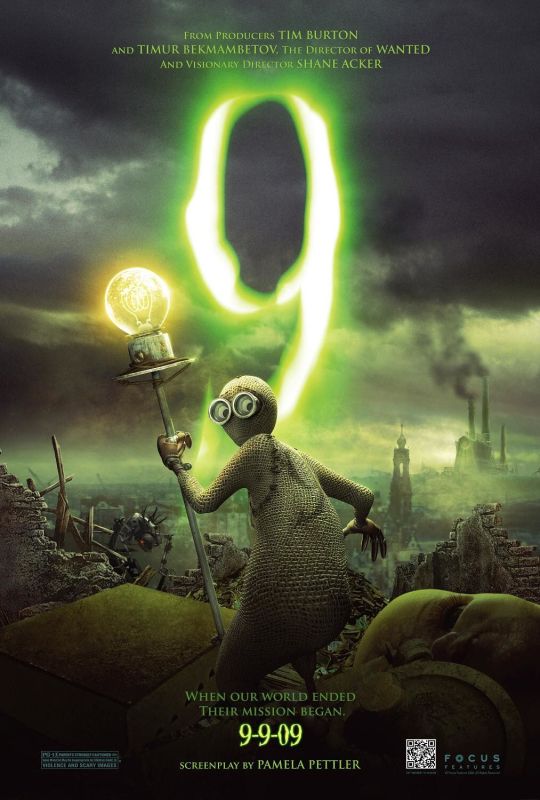
Since just like with a certain voice actress on a 2000s Cartoon Network show, there's not a lot of information on in this case writer/director Shane Acker, the man behind the dark, twisted, action-horror post-apocalyptic animated film 9 from you guessed it 2009.
So here's all the trivia that I could find on the guy if anyone's interested in reading for yourself:

• In an interview, Acker cut to the chase on why he hasn't directed a movie since aforementioned 2009 and here's what he said — "Have a lot of the movies I've been attached to as director fallen into development hell, yes. But the bigger reason is mainly personal, I've just been living my own life. I would absolutely love to direct another feature or anything really but at the same time, I'm enjoying what I already have in life. I'm kind of a schlub that way right down to the fact that I'd nowadays rather sit back on a nice Sunday, watch football and eat bacon and pepperoni pizza than deal with modern studio executives who probably get higher pay every time they yell and scream in your ear".
• He's already listed The Brothers Quay, Don Hertzfeldt, Jan Svankmajer and brothers Christoph Lauenstein as influences previously however recently he's named Terrence Malick, Edgar Wright, Gore Verbinski, Jordan Peele and Richard Kelly as some of his favorite filmmakers.
• Speaking of favorites, he's given some of his favorite movies — Donnie Darko, The Texas Chain Saw Massacre, Dredd, The Watcher In The Woods (1980) and The Chronicles Of Narnia: Prince Caspian (surprisingly).... then he gave some his favorite TV shows — Tales From The Crypt, Bob's Burgers, Squid Game, Buffy The Vampire Slayer and Sons Of Anarchy.
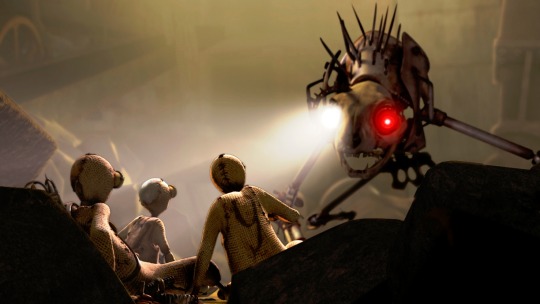
• When asked what was it like working with Tim Burton since he was producer, Acker spoke high praise saying "I would work with him again if the time comes. Tim was a phenomenal producer who allowed for so much creative freedom while at the same time contributing his unique voice and view to the project".
• On the flip side, here's what he thought of the other producer Timur Bekmambetov — "He was very, very, very, very, VERY fucking russian as all hell. I'm surprised he was a Hollywood producer..... he was quite the interesting person".
• He does indeed have an idea for a new project that he not only wants to do but intends on having it be his second film as director, describing it as "The Incredibles crossed with Raiders Of The Lost Ark, it's an animated action-adventure with edge we haven't seen since honestly the early 2010s. I'm still deciding on whether it should be another PG-13 or an actual R".
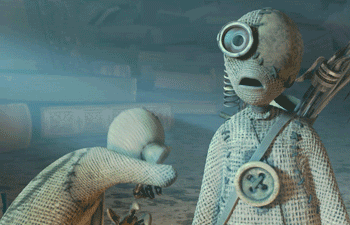
• On modern media, here's his blatant thoughts on it so tough shit to any dope who reads this and gets offended because of stupid reasons — "I think it's been awful. There's barely any genuine storytelling now and instead it's all politics. It's all about representation, obnoxious wokeness, pandering, subverting expectations and shoving as much modern bullshit themes into them than actually telling stories with characters who you care about".
• He's most certainly not a fan of a certain film called Star Wars: The Last Jedi — "I know this is saying quite a lot since I've only been able so far to direct one feature but honestly I wish Last Jedi was never made at this point. Not only is it a truly terrible movie but it's created so much hostility, so much shilling, so much toxicity that it becomes unbearable. If this is that film's legacy than it's a failure".
• There is however one positive about all of this and it's that the one movie that he's excited for and interested in — what is it....

12 notes
·
View notes
Text
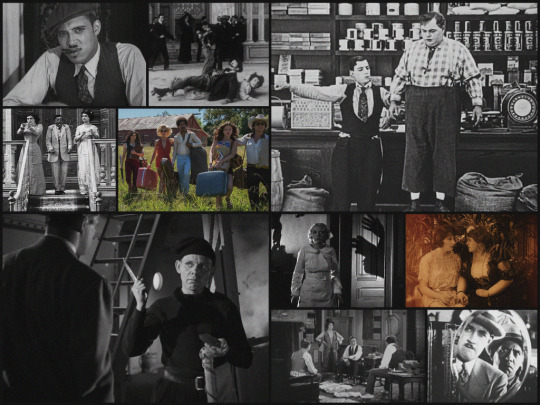
Favorite New-to-Me Films
January ’24
READ on BELOW the JUMP!
(listed in order of collage above, L to R)
Eleven P.M. (1928)
[letterboxd | imdb | kanopy]
Synopsis: Sundaisy, a violinist, tries to fulfill a friend’s dying request to ensure his son is raised away from the criminal element of the city. Unfortunately, Sundaisy is duped by a phony priest, and the boy grows into a low-level crime boss. After a series of misfortunes spurred on by the boy over the course of decades, Sundaisy’s family is nearly ruined. However, Sundaisy’s will for vengeance leads to supernatural consequences. All this is couched in a frame story of a man trying to meet an 11 p.m. deadline.
This is easily my favorite first-time viewing of the month. The synopsis above admittedly does not capture the mystical/transcendental attitude that Eleven P.M. reflects. This is the only film Detroit-based Richard Maurice ever directed, but it displays sophisticated ideas about film storytelling, using an array of devices in inventive ways. It’s always a treat to be reminded of how creative and exciting independent filmmaking can be in America. If you want to check this one out, I advise you to keep an open mind and not approach it with an overly literal, nitpicky mindset. Let Richard Maurice take you on this ride and I don’t think you’ll regret it!
I watched this on the Pioneers of African-American Cinema box set, which I can’t recommend highly enough. The films are outstandingly curated and contextualized and the set showcases an often-overlooked but indispensable part of American cultural history. A lot of the films are also available on streaming through kanopy, which you may be able to access with your library card if you live in the US.
---
Lea on Rollerskates / Lea sui pattini (1912)
[letterboxd | imdb]
Synopsis: Lea isn’t allowed by her parents to go rollerskating with a friend, so she decides to skate in her own bedroom. She proceeds to wreak havoc in the home before an accidental self-defenestration sets her free to wreak havoc at the roller rink instead.
A jam-packed, stunt-heavy bit of nonsense led by Lea Giunchi. I’ve watched quite a few of her films now and I’ve learned this is pretty standard for her. I love each and every pratfall.
---
Two Girls are in Love with Foolshead / Le due innamorate di Cretinetti (1911)
[letterboxd | imdb]
Synopsis: Cretinetti is dating two girls at the same time. The girls decide to duel, but Cretinetti is the one who loses… repeatedly.
I’ve finally gotten around to watching more Andre Deed films and this one was a highlight for January. I don’t know who the skinny woman is, but she and Valentina Frascaroli are great together.
---
X (2022)
[letterboxd | imdb]
Synopsis: A crew of filmmakers leave Houston, TX for the country in order to film a farm-themed porn. The producer of course did not disclose the nature of their stay to the elderly property owners. Said owners have ulterior motives in renting their cabin and respond violently to the group.
Appreciative of all of Ti West’s work, and X has so much going on and so much to say that I originally typed out two full pages (single spaced) on it before I knew it. I won’t be sharing those two pages because I think there are a few points on the approach to gore in recent horror movies that I need to mull over more. For now though, I’ll just say, I didn’t enjoy X at all, but I deeply appreciate what Ti West is putting out there. I probably won’t watch it again and I’m going to be sure my stomach is prepared for whenever I get around to Pearl (2022).
---
The Hayseed (1919)
[letterboxd | imdb | Silent Comedy Watch Party]
Synopsis: Fatty wants to marry Molly, but so does the sheriff. Buster tries to keep the general store in working order while the sheriff plots against Fatty.
Luke the dog is one of my top 5 movie dogs of all time. I’ve never made an official list, but I know in my heart that Luke is at the top. Also, I adore how many modern professional wrestling moves you end up seeing in Fatty/Buster collaborations! In this instance, note the dance sequence with the lady who gets swung around wildly.
---
The Ghost Ship (1943)
[letterboxd | imdb]
Synopsis: Tom Merriam, a young officer, reports for his first commission on a long haul trip on the Altair. The captain has a bit of a strange vibe, but the newbie likes him, at first. As crewmen perish under the captain’s leadership, and the captain’s lectures take on a more sinister tone, Tom knows he needs to act to save the remaining crew and the ship.
Checked this out as I was on a Val Lewton kick not knowing much about it beforehand. I did not expect it to be a movie about fascism done in microcosm. So, if you were looking for a movie about ghosts or a Flying Dutchman, this ain’t it. Its off-beat structure amped up the tension, though the denouement was a little too pat. Cinematography was fantastic, as you might expect from Nicholas Musuraca. I hope Sir Lancelot got two checks for how much his singing contributes to the movie. Richard Dix is such a skilled actor in everything I’ve seen him in, but he is pitch-perfectly terrifying in this movie.
---
Miss Pinkerton (1932)
[letterboxd | imdb]
Synopsis: A nurse who’s bored with hospital work gets assigned to an old woman who’s ailing after a big shock: finding the dead body of her nephew. The detective on the case asks the nurse to gather reconnaissance for him at the house and she gets all the excitement she can stomach as a result.
Miss Pinkerton is a pre-code gem I somehow have never seen before, despite my devotion to Joan Blondell. The plot and characters are interesting, the cinematography (done by Barney McGill) and staging of the film is very dynamic and Joan Blondell brings so much to Miss Pinkerton with her signature effervescent sass. It’s also just over an hour long, so it would make a great watch for one of those evenings where you’re indecisive but want to find something compelling but compact.
---
Phil-for-Short (1919)
[letterboxd | imdb]
Synopsis: Damophilia “Phil” Illington is a free-spirited tomboy brought up by a Greek-professor father and his right-hand man, Pat. Her lack of lady-like decorum raises the ire of two town elders, who are also the local killjoys. When her father passes away, one of the elders abuses his position of power to force her into a conservatorship. Phil disguises herself as a boy and hightails it with Pat. While on the lam, Phil makes the acquaintance of a young woman-hating Greek professor. Through a set of misadventures, Phil and the Professor end up married, but it takes quite a bit of work after the marriage for them to find happiness with one another.
Great characters and performances and I enjoyed marriage not being treated as the resolution or an end point to the story. It’s also very endearing to see such a pervasively queer story about a man and a woman getting together.
---
The Mystic (1925)
[letterboxd | imdb]
Synopsis: A con artist enlists the help of Hungarian travelling carnival performers to enact a phony medium scheme against the hoi polloi of New York City.
Tod Browning is a sure-bet filmmaker for me and The Mystic was no exception. Highlights for me were: the execution of the seance sequences, Erte’s gorgeous costumes for Aileen Pringle, and an ending that I hoped would happen but assumed wouldn’t!
---
There Ain’t No Santa Claus (1926)
[letterboxd | imdb | Silent Comedy Watch Party]
Synopsis: When Christmas rolls around, Charley doesn’t have enough money to both pay the rent and buy his wife a present. He uses his $80 to buy her a watch, instead of the rent, and his nasty landlord/next-door-neighbor steals the watch. Christmas Day turns into a free for all, when both Charley and his landlord dress as Santa and plan to enter via their respective chimneys for their respective children.
Well-paced, great comeuppance, and very well-executed gags. Additionally, Charley Chase looks absolutely outrageous in his Santa wig and he knew it!
---
This one didn’t make it into the collage, but it’s still on the list:
Little Moritz Runs Away With Rosalie / Little Moritz enlève Rosalie (1911)
[letterboxd | imdb]
Synopsis: Little Moritz loves Rosalie and wishes to marry her, but her father objects. So, of course Rosalie and Mortiz run away together in his funky little flivver, but dad and the family dog give chase.
Most of this short is the chase sequence and it’s very well executed. Sarah Duhamel is so cute and so is her family dog. The location shooting is nicely done (was this shot in Nice?) This charming poster captures the vibe of the short perfectly:

---
In January we were hit with a nasty winter storm and, while we were relatively lucky in my neighborhood, we were without internet for a third of the month. So, we ended up relying on our home video collection, which accounts for five of the films above and me re-watching two seasons of Soap and Fritz Lang’s Niebelungenlied (1924).
Despite the holdup, I continued my “Lost, but Not Forgotten” series with The Dancer of the Nile (1923) and started a limited spin-off series, “How’d They Do That?” about special effects and stunts in the silent era.
I also made themed gif & still sets for: Miss Pinkerton, Dementia (1955), and A Christmas Carol (1971).
Here’s to a less eventful February! And, as always, if you’re interested in any of these films, but have specific content warning needs, feel free to ask me.
#classic film#classic movies#roundup#month in review#film#american film#French Film#cinema italiano#italian film#horror film#horror#silent cinema#silent film#1920s#1910s#1930s#1940s#2020s#silent comedy#Val Lewton#Valentina Frascaroli#Lea Giunchi#Sarah Duhamel
12 notes
·
View notes
Text
Trope chats: Gothic Literature

Gothic literature, a genre that emerged in the 18th century, has cast its eerie and enchanting shadows across the literary landscape for centuries. This essay embarks on a comprehensive exploration of Gothic literature, unraveling its defining features, delving into its enduring appeal, tracing its evolution, examining potential pitfalls, and elucidating its use as a literary device, along with its societal influence and impact.
Gothic literature is characterized by its evocative atmosphere, mysterious settings, supernatural elements, and a preoccupation with the macabre and the uncanny. Key features include crumbling, foreboding castles or mansions, eerie landscapes, tormented protagonists, and the interplay of light and shadow. Themes of madness, obsession, and the supernatural often intertwine, creating a haunting and atmospheric narrative.
The enduring appeal of Gothic literature lies in its ability to evoke intense emotions and captivate readers with a sense of otherworldly suspense and terror. It offers a thrilling escape into the unknown, where the boundaries between the rational and the supernatural blur. The genre provides a cathartic experience, allowing readers to confront their deepest fears in a controlled and fictional setting.
Gothic literature has evolved over time, adapting to changing societal, cultural, and literary contexts. While its roots are traced back to Horace Walpole's "The Castle of Otranto" (1764), the genre reached its zenith in the 19th century with the works of Mary Shelley, Edgar Allan Poe, and the Brontë sisters. In the 20th century, Gothic themes continued to influence literature, giving rise to Southern Gothic in the United States and inspiring genres such as Gothic horror and Gothic romance.
Despite its enduring popularity, Gothic literature can fall into certain pitfalls. The reliance on melodrama, sensationalism, and clichés may result in formulaic storytelling. Authors must navigate the line between atmospheric tension and overwrought melodrama to maintain the impact of the narrative. Additionally, the Gothic's tendency to romanticize dark themes may risk trivializing serious issues, such as mental illness or abuse.
Gothic literature serves as a versatile and powerful literary device, enabling authors to explore complex psychological and societal themes. The genre provides a lens through which writers can examine the human psyche, societal anxieties, and the consequences of unchecked desires. The Gothic's use of the supernatural allows for metaphorical and symbolic storytelling, inviting readers to contemplate deeper meanings beneath the surface of the eerie and mysterious narrative.
Gothic literature has left an indelible mark on both literature and popular culture, influencing subsequent generations of writers, filmmakers, and artists. Its themes of mystery, horror, and the macabre continue to resonate, shaping genres such as horror, dark fantasy, and even modern paranormal romance. Moreover, the Gothic has permeated other art forms, influencing architecture, fashion, and visual arts, contributing to the enduring fascination with the mysterious and the uncanny.
Gothic literature, with its enigmatic allure and evocative themes, remains a captivating and influential genre that transcends time and cultural boundaries. As it continues to evolve and adapt to contemporary sensibilities, Gothic literature serves as a testament to the enduring human fascination with the mysterious, the supernatural, and the eerie. Its impact on literature, culture, and the collective imagination underscores its profound significance within the vast and shadowy realms of storytelling.
#writeblr#writers of tumblr#writing#bookish#booklr#creative writing#fantasy books#ya fantasy books#book blog#ya books#writing community#teen writer#writers#writing blog#tumblr writers#writblr#writer problems#writerblr#writers community#writers on tumblr#writers corner#writerscommunity#writers and poets#writerslife#book#books and reading#bookworm#book recommendations#book review#booklovers
12 notes
·
View notes
Text
i know its just a pet peeve of mine because of the neurodivergence but i cant stand when people refer to "saw" as torture porn or even worse pose "saw" as the originator of torture porn!!!! saw has a long origin story but it was released in 2004, after which lions gate finally felt confident enough to approve a pitch from eli roth to make another original film, this being 2005's "hostel". david edelstein wrote the piece "torture porn: the sadistic movie trend" in new york magazine as a sort of response to "hostel", where he cites some other recent films like "wolf creek" and "the devil's rejects" and, most notably, gaspar noe's "irreversible", which is The quintessential new french extremity film, as emblematic of a trend in horror (and post-9/11 filmmaking) of explicit torture and amorality. he coined the term "torture porn" specifically because he cites carol clover's famous book "men, women, and chainsaws" in which she argues that 80s slashers developed unique sexual undertones in that final girls triumphed over overwhelmingly male killers brandishing phallic weapons, and compares the blood splatters from these slashers and the new graphic films to the "money shot" in porn. he describes these modern torture films as equivalent to porn in that they are interested more so in delivering a shocking (read: orgasmic) experience than having a nuanced conversation about violence or interrogating specific points of view (in the spirit of "porn has no characters or story"). there is a long history of comparing horror and sex in cinema academia, so this is a logical conclusion and a suitable term, but it has become so distanced from the original argument and comes from a very american point of view that neglects to touch on new french extremity or non-american filmmaking with the exception of presenting "irreversible" as the holy grail of "unwatchable" and ultimately "pointless" torture. at this point, "torture porn" as a valid identifier is meaningless and the original "saw" has little to do with it other than tangentially contributing to the creation of the term and contributing to an interesting conversation about moviemaking, storytelling, and voyeurism in a post-9/11 world that is often overlooked in favor of arbitrarily assigning character to its audience
#syd squeaks#youtubers have to attend my school before theyre allowed to talk about anything along these lines. silence!!
14 notes
·
View notes
Text
Structuralism and Semiotics
youtube
The music video for a-ha's "Take On Me" was released in 1985 and and utilized a groundbreaking blend of live-action and animation, specifically rotoscoping. The video's most striking feature is its unique visual style. It begins with a live-action sequence, set in a cafe where the use of lighting and cinematography sets a nostalgic and somewhat romantic tone.The most memorable aspect of the video especially during this time is its use of rotoscoping animation. This technique involves tracing over live-action footage frame by frame to create a stylized animated look. The animation transports the protagonist, into a comic book world filled with action and adventure. The video tells a narrative of a young woman, who becomes absorbed into a comic book and embarks on a thrilling adventure with the protagonist. It's the classic boy meets girl story but with a twist. The comic book setting symbolizes the power of storytelling and the ability to create one's own narrative. The video for had a significant impact on popular culture and set a new standard for music videos. Its innovative use of animation inspired countless artists and filmmakers, and it remains a beloved and frequently referenced cultural touchstone decades after its release.
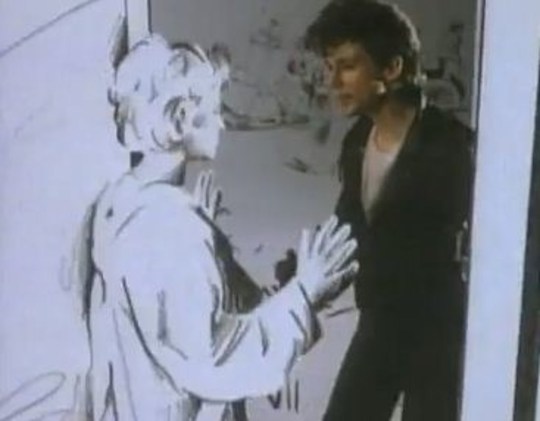
Taking a deeper analysis into the video Saussurean concepts of sign, signifier, and signified are present. In the music video, various signs are presented visually (such as characters, settings, and actions) alongside the auditory signifiers: the music and lyrics. The sketches shown throughout the video represent a signifier that conveys the concept of the protagonist imagined world or desires (signified). Analyzing this through Metz’s lens, the signifier of the animated characters entering the comic book world signifies a journey into fantasy or escapism. Escapism is a present theme in this video as it follows a narrative arc in which the protagonist transitions between the real world and the animated world representing the transition between reality and fantasy, echoing the themes of the song itself. The theme of escapism is also represented through the paradigmatic relation that is created with the contrast between the real-world setting and the animated world. Syntagmatic relations is also present in this video as the sequence of visual and auditory elements creates a syntagmatic structure.The progression of scenes, transitions, and actions forms a narrative sequence that guides the viewer through the story depicted in the video.

Analyzing through the lens of Roland Barthes the video might be perceived as selling the idea of transcending reality through love and imagination, much like how detergent ads sell the idea of transcending dirt to achieve cleanliness. In the video the animated world serves as a guide to a fantastical realm, inviting viewers to explore new possibilities and perspectives while guiding them through a journey of romance and adventure which can be connected to Barthes discussion on the cultural significance of travel guides. Barthes discusses the manipulation of historical narratives in films to convey certain ideologies which can be seen in the music video as it presents a narrative reminiscent of a romance or adventure film. The transformation of entering the comic book world can be seen as a modern interpretation of historical narratives, where the past is reimagined and romanticized for contemporary audiences. The romantic relationship depicted in the video can be interpreted as emblematic of idealized love or romanticized partnerships, reflecting societal norms and expectations surrounding relationships. Barthes discusses how modern myths are constructed and perpetuated through various forms of media and the music video constructs a myth around love, adventure, and escapism. The video perpetuates these myths through its visuals and narrative, reinforcing cultural ideals and values associated with romance and fantasy. In conclusion, analyzing the music video through different lenses reveals how the video constructs and perpetuates cultural myths surrounding love, adventure, and escapism. These lenses help us delve into the videos semiotic dimensions, exploring how the use of narrative, imagery, symbolism, signs and signifiers serves to create meaning within the visual and auditory text and reinforce societal norms.
youtube
The music video for "Nothing's Gonna Stop Us Now" by Starship was released in 1987 and played a significant role in the song's success. The video primarily takes place in a movie studio, reflecting the theme of the song being featured in the film “Mannequin.” This setting allows for various backdrops and sets to be utilized, adding visual interest and diversity to the video. The video follows a narrative that intertwines scenes from the movie “Mannequin” with footage of the band performing the song. The storyline of the movie, which revolves around a mannequin that comes to life, complements the message of the song about love overcoming obstacles. Throughout the video, shots of the band performing the song are interspersed with the narrative scenes. The band members are shown singing and playing their instruments with energy and enthusiasm, adding to the overall excitement of the video. The video includes romantic scenes between the characters from the movie, emphasizing the theme of love and connection. These scenes enhance the emotional impact of the song and reinforce its message of resilience and devotion. The video incorporates various visual effects, including transitions between scenes, lighting effects, and overlays, to enhance the overall aesthetic appeal. These effects contribute to the video's polished and professional look, aligning with the high production values of the song and its accompanying movie. The video features dynamic camera work and creative framing, capturing the energy of the band's performance and the emotional moments of the storyline.
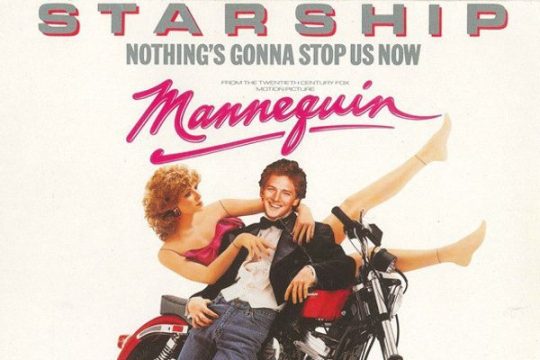
Analyzing the music video through the lens of Roland Barthes' essays from “Mythologies” offers an opportunity to deconstruct the cultural symbols and myths embedded within both the song and its visual representation. Barthes discussion of the manipulation of historical narratives to convey certain ideologies which can be seen in the video through elements such as the portrayal of the band members and use of dramatic backdrops that convey a sense of epic scale and evoke grandeur, triumph, and romance reminiscent of classical narratives. In the music video, themes of cleanliness, purity, and renewal, are symbolized through imagery such as bright, pristine settings, or the use of light and color to convey a sense of freshness and vitality. In the music video, their are references to travel and exploration, as the protagonists embark on a journey together against various scenic backdrops. These settings could serve as symbolic landscapes representing the adventure and possibilities inherent in love and partnership. The intimate moments portrayed between the protagonists represent domestic bliss and reinforce the narrative of enduring love and commitment which connects to Barthes values of stability, responsibility, and domesticity.

Metz discusses how cinema uses various codes and signs to convey meaning which is shown in the video as there are several codes such as visual imagery, music, lyrics, and performance. These codes work together to create a narrative and evoke emotions. The video follows a narrative structure that complements the song's lyrics. Based on the title and lyrics of the song it could be depicting a story of love, perseverance, or triumph over obstacles. The video utilizes cinematic techniques such as camera angles, editing, lighting, and choreography to convey its message. An example of this is the close-up shots that are used to emphasize emotions, while fast editing may create a sense of energy and excitement. Applying Metz's framework to the video allows for a deeper understanding of how its various elements work together to create meaning and evoke emotions in the viewer. In the video the facial expressions and body language of the performers, as well as the imagery used in the video to represent themes of love, determination, and overcoming obstacles. Saussure's theory of binary oppositions suggests that meaning is often constructed through the contrast between opposing concepts. Instances of binary oppositions are shown in the music video, such as contrasts in lighting, color palette, or visual motifs, which contribute to the overall message of the song. This lens gives us insights into how visual signs and symbols are used to convey meaning, emotion, and narrative in the context of popular culture and media production.

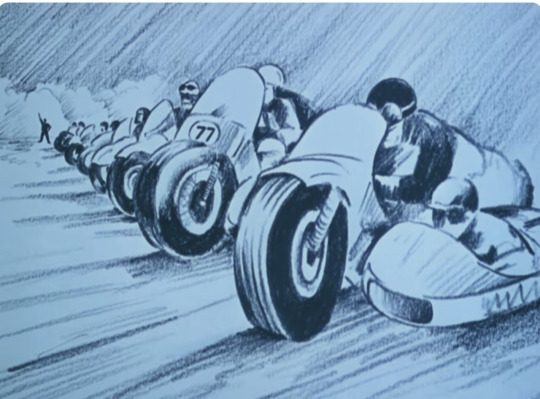
Discussion Questions:
Are there instances where the visuals seem to contradict the lyrical content?
What similarities can be drawn from both of these music videos? What about the actual songs? Is there any differences?
Do you think that the music videos represent the music correctly?
Why do you think love is portrayed the way it is in these music videos?
Do you think that semiotics were a present part when these videos were made?
Ferdinand de Saussure, Course in General Linguistics, trans. Wade Baskin (New York: McGraw-Hill Book Company, 1915)
Roland Barthes, Mythologies, trans. Annette Lavers (New York: The Noonday Press, 1972)
Metz, Christian,“Some Points in the Semiotics of Cinema. In Film Theory and Criticism, 65-77. Edited by Leo Braudy and Marshall Cohen (New York/Oxford: Oxford University Press, 2009)
8 notes
·
View notes
Text
Gogu: Apart from the movie Jagat, I don’t see many clear attempts in Malaysian Tamil cinema to explore our identity. Nevertheless, I draw immense inspiration from other Malaysian filmmakers like Tan Chui Mui, Yeo Joon Han, U-Wei, and Dain Said. Their intimate films delve deep into the psyche of society, raising thought-provoking questions for the audience. It’s truly empowering to witness yourself, your community, and your landscape represented in films. It validates our existence, our joy, our dreams, and the personal struggles we go through.
One thing that truly fascinates me in Southeast Asian films is how they beautifully portray our local beliefs and magic. Our region has a rich history filled with rituals, ghosts, and myths, and seeing them come to life on the screen adds a unique touch to the storytelling, specific to this part of the world.
Moreover, there’s a naturally slow pace in our region, which Indonesians would call “santai.” It’s during these unhurried, laid-back moments that we reflect on our lives. However, this inherent rhythm is being disrupted by new fast-paced narratives and modern technology. Some fantastic filmmakers from our region, like Apitchapong and Lav Diaz, are constantly fighting against this trend. They strive to bring back alignment and harmony in our thoughts through their work.
— Malaysian Tamil Film Duo Gogularaajan And Kumanavannan Rajendran On The Complexities Of Cinema, Southeast Asia, And Tamilness
#gogularaajan rajendran#kumanavannan rajendran#malaysian tamil cinema#malaysian tamil filmmakers#southeast asia#southeast asian cinema#malaysian cinema#tamils in southeast asia
16 notes
·
View notes
Text

Recently watched: Poor Things (2023). Think of it as The Bride of Frankenstein meets My Fair Lady. I recommend it but with caveats as this film is ultra-divisive! I found Poor Things lively and intriguing, but my boyfriend Pal’s immediate response as the end credits rolled was, “I hated it!” The distinctive off-kilter vision of Greek filmmaker Yorgos Lanthimos is one you either like or you don’t. (You require a high tolerance for fisheye lenses, plinky-plonky discordant music and CGI sunsets. Pal loathed Lanthimos’ earlier film The Favourite (2018) too, so I was surprised he was keen to see Poor Things). Anyway, Peter Bradshaw of The Guardian gave Poor Things five out of five stars and called it a “toweringly bizarre epic … a steampunk-retrofuturist Victorian freakout and macabre black-comic horror” and I thought it was bold, sweeping storytelling. The performances of Emma Stone, Willem Dafoe and Mark Ruffalo are justifiably receiving acclaim, but the supporting cast is exceptionally noteworthy: British character actress Vicky Pepperdine as the appropriately named housekeeper Mrs. Prim (I love her appalled delivery of the line, “She grabbed my hairy business!”); still-glamorous 80-year-old former R W Fassbinder muse Hanna Schygulla as a sybaritic cruise passenger; stage actress Kathryn Hunter as Swiney, the reptilian and ornately tattooed madam of a Parisian brothel and even avant-garde British chanteuse Keeley Forsyth (the closest equivalent we have to a modern Nico) makes an impression in a blink-and-you-miss-it appearance as a maid.
15 notes
·
View notes